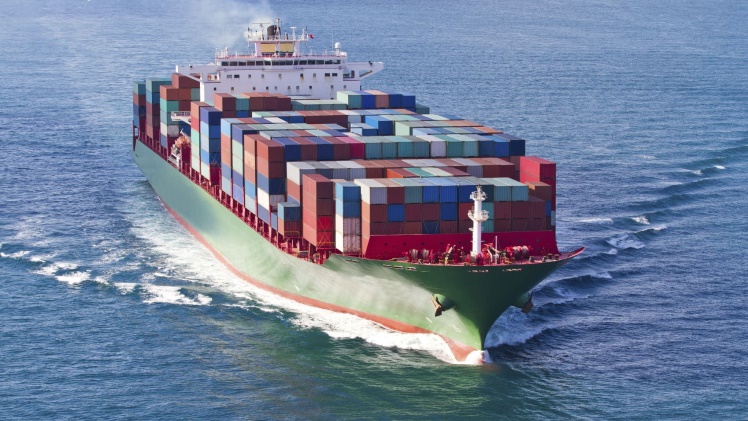The logistics industry is a highly dynamic sector that is constantly evolving and improving the performance of various services. Whether it is domestic or international shipping, it is crucial for both customers and industry professionals to have a solid understanding of the fundamentals. This includes topics such as ocean freight services, basic cargo composition, and international shipping methods. This article aims to provide an introduction to these important concepts and more.
What are ocean freight services?
Freight forwarders offer ocean freight services that aim to facilitate the transportation of goods to other countries, providing peace of mind to shippers. The process is strictly supervised, ensuring reliable delivery at the endpoint. Additionally, freight forwarders provide financial assistance for international transportation, offering two benefits: faster delivery and cost-effective transportation. These professionals are experienced in providing reliable door-to-door delivery services between different countries.
What are the main cargoes transported across the ocean?
In the logistics industry, there is no such thing as a typical cargo as customers require transportation for various goods on a daily basis. While there are some limitations, sea freight generally allows for more types of articles to be transported. However, certain dangerous or perishable goods require specific transportation conditions. For instance, fragile products are packed in appropriate containers, while some goods are frozen to prevent moisture. To ensure that your shipment complies with ocean freight regulations, it is important to have it inspected by a shipping agent. Typically, a shipment weighing over 100 kg or consisting of multiple boxes is suitable for ocean freight. The loading process is the responsibility of specialists who ensure that the goods are loaded correctly.
How are things delivered internationally?
It is advisable to seek the assistance of professionals when it comes to the logistics of your shipment. However, having knowledge of the type of shipping and the containers and vessels used can be beneficial. In the global economy, twenty-foot equivalent units (TEUs) play a significant role in the shipping industry. Cargo containers that are carried by vessels are the most commonly used for international shipping. The import and export process involves precise packing, loading of the ship, and passing through customs before the goods reach their final destination. The use of a twenty-foot unit is crucial as it is the average size of a shipping container. While the average size of new containers is approximately 40 feet, the number of articles should be at least equivalent to one twenty-foot container. It is common to encounter terms like FEU or 2 TEU, with FEU being the most popular container size. However, customers may still opt for 20-foot containers if required. All of these conditions can be negotiated with shipping companies that provide international services.
It is worth noting that ocean freight is becoming increasingly secure and modern. Some containers are equipped with built-in technology that allows full tracking of the shipment, including identification of its location and contents. Innovations in terms of load capacity are also underway, with the maximum capacity increasing. Maersk, the world’s largest international shipping company, has made significant improvements in this regard. With its extensive base and capacity, it is capable of transporting multiple containers. To sum up, international shipping is currently the most effective solution available. Developed countries have many automated ports that offer quick, easy, and cost-effective loading and unloading.
Where is international shipping done?
Certainly, for those interested in ocean freight, it’s a relevant question worth exploring. Fortunately, many companies provide worldwide import and export services, so it’s unlikely to encounter many difficulties in this regard. However, it’s important to note that entry costs can be higher in some countries than others. The majority of global maritime trade follows a route from China to the US West Coast, with nearly 50% of all maritime trade originating from Asian cities. Weather conditions can impact shipping times and costs, with smoother conditions resulting in faster shipments and lower prices. It’s recommended to compare multiple offers from various providers to select the best option for your shipment.
How long does it take to transport ocean freight?
Time is a variable concept when it comes to ocean transportation, as unforeseeable circumstances can always occur. However, advancements in technology and processes have led to a decrease in such occurrences, resulting in more timely deliveries. There are multiple factors that influence the duration of ocean transportation, including the time the shipment spends in water and the time it takes to travel from point A to point B. The transportation process involves multiple steps that must be carefully executed in order to ensure successful delivery. While carriers typically provide an estimated time of arrival, the location of the goods, potential delays (such as customs, inaccurate information, or insufficient documentation), and other factors may affect the actual delivery time.
What is the current state of international shipping’s economic situation?
Maritime trade has been the preferred method for transporting goods between countries for several years. Due to the constant demand, significant investments have been made in technology to improve this industry. With growth being observed almost every year, customers are generally satisfied with the service provided. In order to meet the demand, carriers are also investing in additional ships that have more capacity and new routes. However, this growth has not come without challenges, as the major contractors of these overseas operations, such as Maersk, MSC, and CMA CGM Group, have suffered significant financial losses due to a fight for low tariffs. Despite this, companies that engage in international trade have benefited from the lower tariffs, and port operators are making a net profit and are content with the situation.
Different types of shipping
There is a diverse range of ships available for transporting goods across the globe, ensuring that deals can be tailored to meet various needs. As not all international merchants can fill ships with large capacities, there are various options available. The best ship for a particular cargo and transport method is selected accordingly.
Below are some types of ships commonly used for international shipping:
- Container ships, also known as “ship boxes,” come in sizes of 20 or 40 cubic feet and can stack containers on the deck and below it.
- General cargo ships are ideal for bulk goods, such as fertilizers, ore, grain, and other items, regardless of their type.
- Roll-on-roll (ro-ro) vessels are designed to transport road and passenger vehicles. If you require road haulage, you need to delve deeper into some aspects and contact more companies that offer this service.
- Tankers are specialized ships for the bulk transportation of oil and gas.
A merchant operates his business with all these types of ships in two main ways:
- Liner ships: They operate on fixed standards that the clients must agree to, with specific routes, timetables, and standard fares. These types of deals are quite popular with clients because they offer a cheaper price. Container ships, carriers, roll-on/roll-off carriers, and general cargo ships are the dominant types of liner ships.
- Charter ships: They are fully customized and operate according to the client’s requirements. A person hires them for a specific load, and their ports of loading and unloading are chartered. The cost of charter ships is variable and significantly higher as it is determined by current demand and supply. The majority of charter ships, including bulk carriers and carriers, operate in such markets.
What influences ocean freight rates?
International shipping can be a cost-effective option for transporting large shipments. However, it may not be as economical for smaller shipments, and it is important to consider this when planning transportation. Shipping companies have varying and often fluctuating rates due to various factors that can change throughout the year.
Some major factors summarize the formation of the final price for ocean freight:
- Fuel is a significant factor in determining freight charges as carriers are directly affected by fuel prices, which are constantly changing. Capacity is another important factor. When demand for shipping space is high and capacity is limited, prices tend to increase. Conversely, when supply is sufficient or greater than demand, prices tend to decrease.
- Currency exchange rates also play a role in determining the cost of ocean freight. While the US dollar is the most commonly used currency for international ocean freight, fluctuations in currency exchange rates can lead to daily changes in tariffs.
- Seasonal demand for certain goods also affects ocean freight rates. For example, some goods may experience price increases during certain times of the year due to changes in consumer demand.
- Finally, each shipping line may offer a different price based on their own internal pricing structures. These companies will typically provide a specific offer based on current conditions and the cargo being transported from one location to another.

